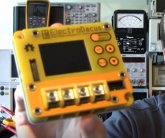Mars
New Member
- Joined
- Oct 10, 2019
- Messages
- 82
I am not satisfied with the BMSs that are out there so I decided to make my own.
Here is a list of some of the features I would like:
Mars
Here is a list of some of the features I would like:
- Maintain battery balance.
- Low temperature charging cut off.
- High temp load shedding.
- Display for all voltages (like the ISDT BattGo BG-8S Battery Meter).
- Charge counting battery capacity display.
- Amp and energy monitoring for solar charging, AC inverter load, DC loads.
- At least three levels of load shedding.
- Output data for monitoring via network connection.
Mars



